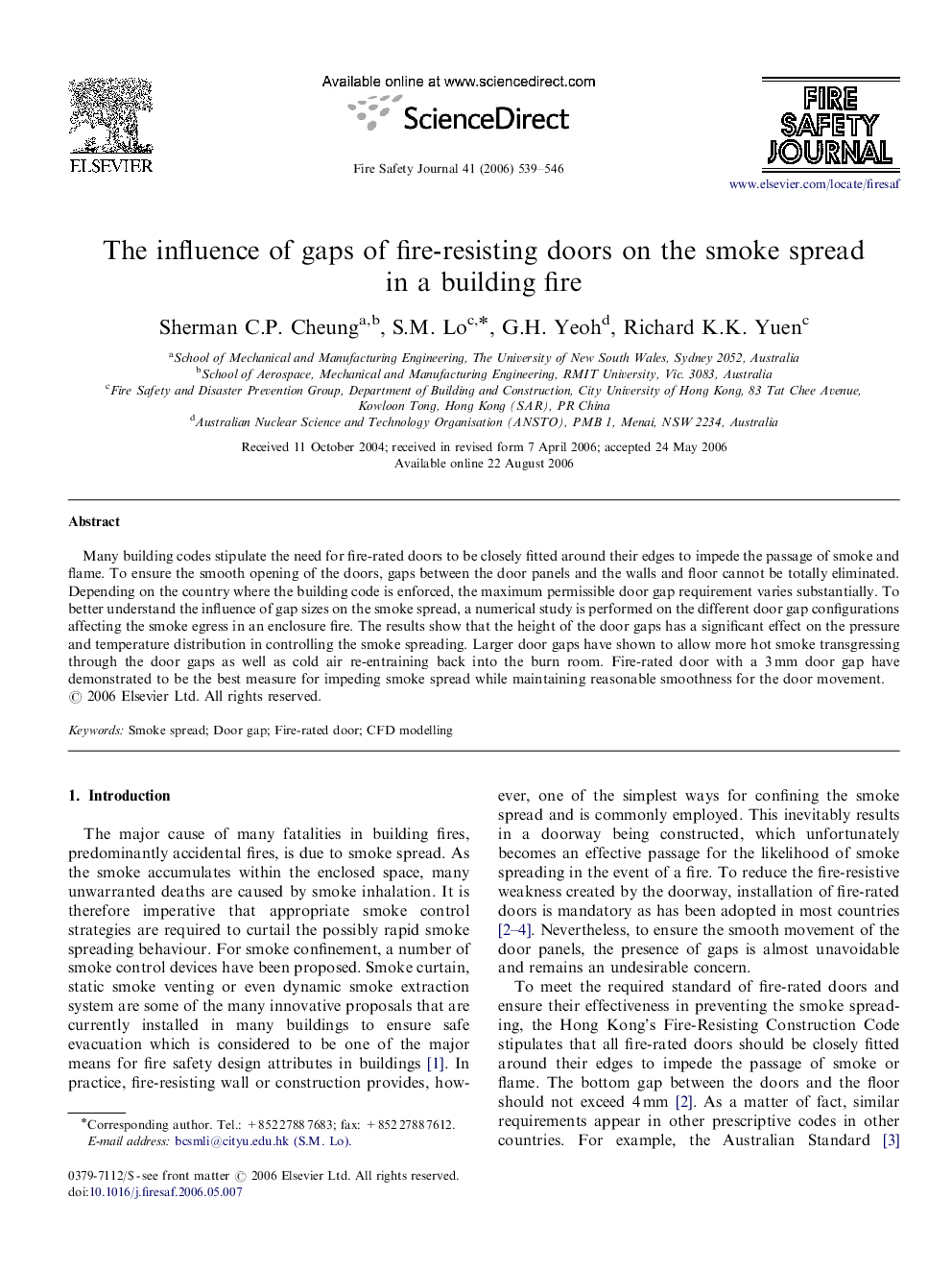| Article ID | Journal | Published Year | Pages | File Type |
|---|---|---|---|---|
| 270494 | Fire Safety Journal | 2006 | 8 Pages |
Many building codes stipulate the need for fire-rated doors to be closely fitted around their edges to impede the passage of smoke and flame. To ensure the smooth opening of the doors, gaps between the door panels and the walls and floor cannot be totally eliminated. Depending on the country where the building code is enforced, the maximum permissible door gap requirement varies substantially. To better understand the influence of gap sizes on the smoke spread, a numerical study is performed on the different door gap configurations affecting the smoke egress in an enclosure fire. The results show that the height of the door gaps has a significant effect on the pressure and temperature distribution in controlling the smoke spreading. Larger door gaps have shown to allow more hot smoke transgressing through the door gaps as well as cold air re-entraining back into the burn room. Fire-rated door with a 3 mm door gap have demonstrated to be the best measure for impeding smoke spread while maintaining reasonable smoothness for the door movement.
